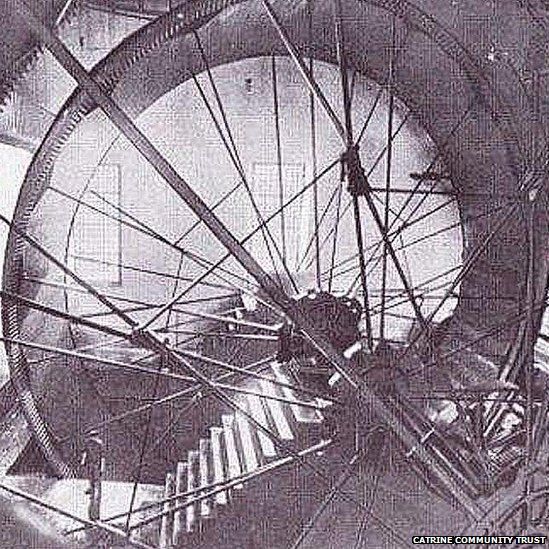Catrine hydro scheme harnesses 18th century technology
- Published

In its day, it was a wonder of the industrial world.
Tourists would travel to the East Ayrshire village of Catrine to see the largest water wheel in Britain, part of the local cotton mill.
The wheel was driven by the River Ayr - and although the mill is long gone, the river is soon to provide power for the community again.
Catrine Community Trust is to bring back into operation a hydro-electric station, abandoned in the 1960s, which will harness the power of the river.
It will use the ingenious water system developed for the cotton mill in the village, which once employed more than 1,000 workers.
When in opens in Spring, 2015, it is hoped it will feed into the National Grid, generating up to £120,000 a year for the local community, which is one of the most deprived in East Ayrshire.
Celebrating
Bob Pirrie, development officer of the Catrine Community Trust, said the scheme is the centrepiece of efforts to revitalise the village.
"This whole project is a great way of celebrating, restoring and building on the past industrial heritage of Catrine to build a positive future with new and exciting opportunities for the present day community," he said.
But before the trust could get to this point, it had to refurbish the 18th Century dam and the voes, the artificial lakes which held water above the mill to act as header tanks to maintain the river flow.
Years of neglect had taken their toll and the weir on the River Ayr where the water was diverted into the mill lade was in danger of being washed away in the next big flood.
The voes and their channels have been cleared of silt and a fish ladder, crucial to maintaining the health of the River Ayr salmon and trout population, has been provided.
The cleared voes are now home to ducks, swans and herons.
Trust development manager, Hugh Hutchison, said the project has also improved life for those with few job opportunities in the area.
Local people have been employed, and received training during the engineering work - and the benefits will continue, he said.
"The residents are going to benefit because with our visitor centre which we will be running, we will actually be doing skills transfer.
"We'll be making people more employable which will help the deprivation which has blighted this area for quite some considerable time."
Catrine was founded in 1787 as a model village similar to that in New Lanark, and was developed by such leading figures of the industrial revolution as Richard Arkwright and David Dale
Now, the pioneering technology which turned Catrine from an isolated hamlet into a thriving industrial centre is once again helping to fuel the economy of the village.